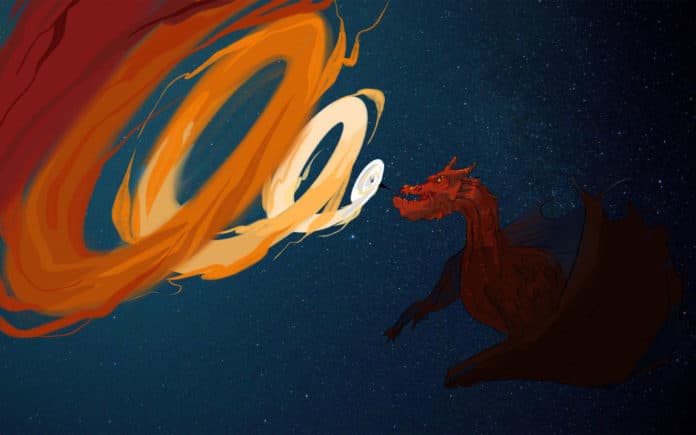Quasars, which are exceptionally bright objects at the center (or cores) of galaxies, are believed to be delivered through the gradual addition of gas into disks encompassing supermassive black holes. There is observational evidence at galactic and circumnuclear scales that gas flows inwards towards accretion disks around black holes, and such an inflow has been measured at the scale of the dusty torus that surrounds the central accretion disk.
Now, for the first time, scientists observed the accelerated rate at which eight quasars consume interstellar fuel to nourish their black holes.
Hongyan Zhou, paper author and faculty member at the University of Science and Technology of China said, “As the most luminous steady beacons in the Universe, quasars are believed to be powered by an accretion disk around the central black hole.”
“The supermassive black hole in the center of the quasar gobbles up an enormous amount of nearby materials, which glare and shine when they constitute an accretion disk before finally sliding down in the black hole. Outside the accretion disk, materials are continuously pumped from all directions to the center by gravity to feed the black hole with an endless appetite.”
Some basic questions remained unanswered: Is the accretion disk fueled with external mass? If so, how?
The interstellar gas can’t be observed directly, as the accretion disk’s brightness overpowers its radiation signature. Instead, scientists monitor for gas falling into the disk that may go through their observable pathway. The gas makes a sort of eclipse among Earth and the accretion disk, throwing lines onto the disk’s spectrum of radiation.
By using the Doppler effect, scientists estimated these lines. They then observed the velocity of gas feeding into the disk, toward the black hole. A classic Doppler effect is a manner by which the pitch of a police siren drops once it passes. Astronomers consider this passing pitch as the ‘redshift’ when estimating how rapidly gases move toward an article away from Earth.
Scientists measured velocities of 5,000 kilometers per second. For comparison, a passenger jet travels at less than a thousand kilometers per hour.
Zhou said, “Such a high velocity can only be accelerated by the strong gravity of the central black hole. It’s comparable to how, in a meteor shower, the closer the meteors get to the ground, the faster they fall.”
Scientists found that the quasars were supplied with fast-falling external mass from surrounding space. The disks themselves then create inflows to the black hole.
Scientists are further planning to explore precisely how these quasar “dragons” organize and differentiate the external mass from accretion disks to fuel inflows.
The results are published in the journal Nature.
